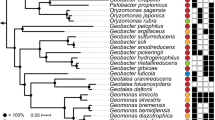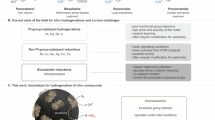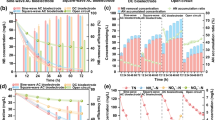Abstract
CERTAIN organic nitro-compounds, for example, chloramphenicol, are known to arise biologically; but very little is known about the transformation of this class of compounds by micro-organisms. Erikson1 and Moore2 found that certain Actino-mycetes could utilize picric acid, trinitroresorcinol, and nitrobenzene, and Simpson and Evans3 have reported briefly on species of Pseudomonas that decompose o- and p-nitrophenol with the formation of nitrite; the last workers also mention nitrite production from 2,4-dinitrophenol and chloramphenicol.
This is a preview of subscription content, access via your institution
Access options
Subscribe to this journal
Receive 51 print issues and online access
$199.00 per year
only $3.90 per issue
Buy this article
- Purchase on SpringerLink
- Instant access to full article PDF
Prices may be subject to local taxes which are calculated during checkout
Similar content being viewed by others
References
Erikson, D., J. Bact., 41, 277 (1941).
Moore, F. W., J. Gen. Microbiol., 3, 143 (1949).
Simpson, J. R., and Evans, W. C., Biochem. J., 55, (2), xxiv (1953).
Bergey, D. H., “Manual of Determinative Bacteriology” (Baillière, Tindall and Cox, London, 6th edit., 1948).
Author information
Authors and Affiliations
Rights and permissions
About this article
Cite this article
JENSEN, H., GUNDERSEN, K. Biological Decomposition of Aromatic Nitro-compounds. Nature 175, 341 (1955). https://doi.org/10.1038/175341a0
Issue date:
DOI: https://doi.org/10.1038/175341a0
This article is cited by
-
Untersuchungen �ber den Abbau von Halogen-nitrobenzolen durch Bodenbakterien
Archiv f�r Mikrobiologie (1964)



